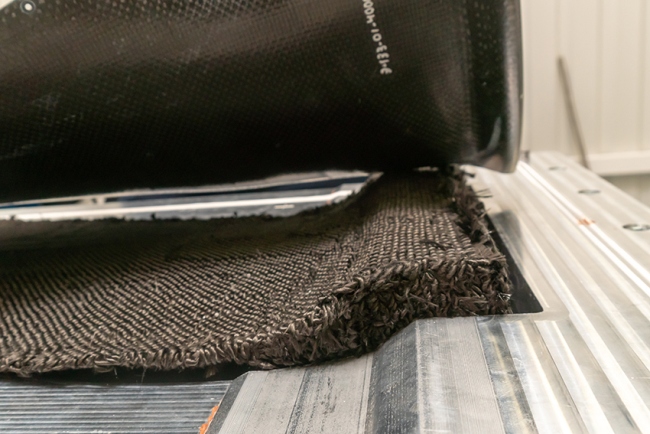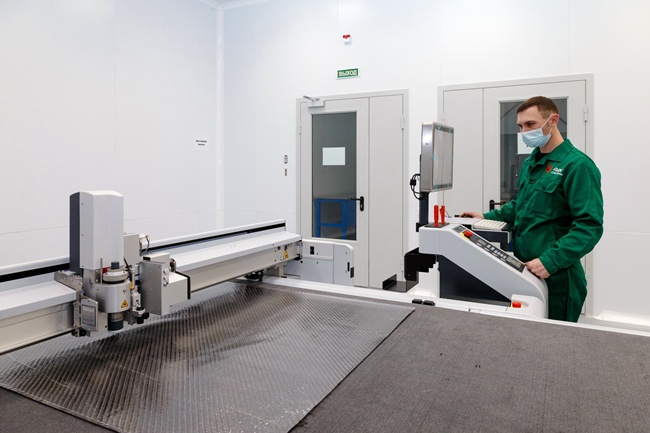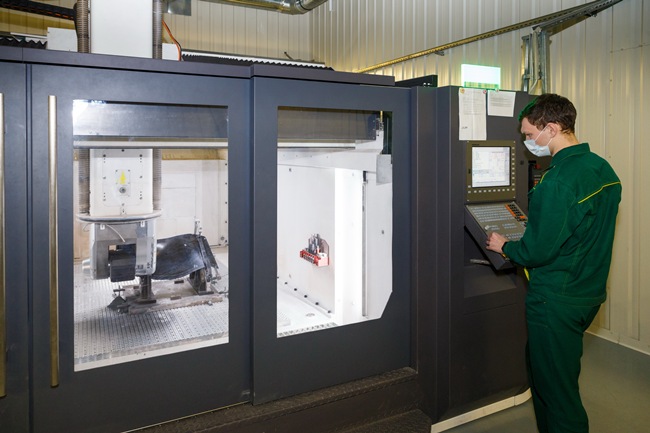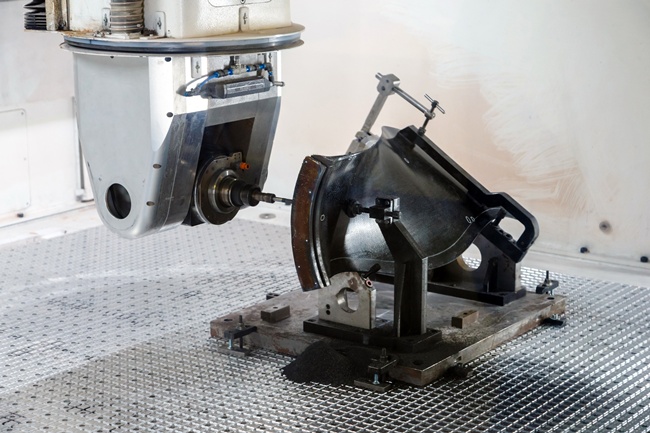Weaving in 3D
In the hands of the engineer, a canvas woven from thick synthetic threads. On the one hand, a workpiece of a fancy shape has a thickening in weaving, on the other, on the contrary, the fabric seems to become thinner. In fact, this is a kind of pattern for the future engine fan blade.

This is the so-called preform - a woven carbon fibre blank. It is made according to the technology of three-dimensional weaving on special equipment that has been adapted for this technological process. «Until now, such complex woven structures have not been manufactured in Russia, - says Vitaly Krupennikov, deputy chief engineer of the pilot plant for polymer composite materials. - Long-term development has led to the receipt of samples of demonstrator parts, which are subject to both bench tests and tests as part of the propulsion system».
The technology of three-dimensional weaving resembles the process of making artificial flowers in labor lessons, when petals from a fabric are impregnated with a starch solution, ironed and attached to a wire stem. In the manufacture of blades, instead of a satin ribbon, there is a reinforced material, instead of starch, a binder with a complex composition, a giant industrial press replaces an iron.
The preform arrives at UEC-Saturn in a finished form: it is manufactured according to a special order at one of the Russian enterprises. Three-dimensional fabric is produced using jacquard weaving. The preform manufacturing process is developed as part of research and development work.

The thread itself is a high-strength material with unique properties. The binder is a special epoxy resin developed at the All-Russian Scientific Research Institute of Aviation Materials in strict accordance with the technical requirements for this particular product, which ensures the impact resistance of the composite material.
«The resulting composite has a low density, even in comparison with aluminum, but much higher strength, and design and technological research allows achieving characteristics that exceed titanium alloys in some indicators,» - explains Krupennikov.
In a separate room there is a huge table where the reinforced fabric is cut - a digital cutting plotter. The operator loads into the computer a file with a program that sets the contours for the future engine blade, checks the correct placement of the material on the surface. The plotter will do the rest of the work on its own, choosing the optimal cutting tool.

At the same time, it is important that during cutting no foreign materials fall on the canvas - any particle can spoil the workpiece. Therefore, the plotter is installed in a so-called "clean" production room, where the parameters of the working environment are controlled in a special way: you can enter only through a special gateway with reduced pressure relative to clean rooms and with increased pressure relative to general production rooms.
The prepared preform is laid out on a special matrix of the cutting die, exactly repeating the contours of the future blade, and covered with the second half of the matrix. Further, under pressure, the preform is impregnated with a binder, the materials are bonded into a single whole, the structure acquires the necessary strength and fixed shape under the influence of temperature.
At the exit, the workpiece is subject to machining. The final stage is gluing a protective edge - a titanium plate (outwardly reminiscent of a Persian sabre), which protects the fan blade from impacts when foreign objects hit, and gives it additional strength.

«Outwardly, everything looks quite simple, but in the process itself there are a lot of nuances and subtleties that just make it complex and science-intensive, - explains Vitaly Krupennikov. - Each stage is accompanied by control for compliance with the geometry of the shape and hidden defects».
The lighter the better
The technology of manufacturing blades from composite materials allows to reduce their weight, which, in turn, will significantly reduce the weight of the engine itself. In UEC-Saturn this technology is used in the dimensions of the PD-14 engine, that is, they make blades 750 millimetres long. When all the necessary tests have been passed, it is planned to start serial production of such blades for the new PD-35 high-thrust engine. Its fan is 3.5 meters in diameter, respectively, the length of each blade is 1250 millimetres. The mass with an increase in the size of the blade plays a significant role. Experts believe that, for example, titanium blades of this size are unlikely to be able to provide the specified quality characteristics.
Development of a fan rotor blade made of polymer-composite material belongs to the so-called critical technologies and has the first serial number. This is due to the fact that reducing the mass of the fan blade significantly affects the mass of the entire engine. In addition, it is a rotor part, that is, reducing its mass reduces the load on bearings and shafts.

«The design of the engine itself must be resistant to penetration by the blade. Therefore, it is the weight of the blade that influences the decision on the choice of material and design of the fan casing, and in many respects, what the final weight of the engine will be,» - says Vitaly Krupennikov.
Reducing engine weight will also improve fuel efficiency. According to experts, a blade made of three-dimensional reinforced material has increased strength and will be resistant to delamination. Until the technology is finally worked out, the blades, which are manufactured in a pilot production, are not parts of any units. Products are subject to rigorous research and testing.
Simultaneously with the Rybinsk-based UEC-Saturn, UEC-Aviadvigatel is developing a technology for creating a fan rotor blade from polymer composites. Specialists of the Perm enterprise are studying the possibility of creating a blade from polymer composite materials by layering with subsequent thermoforming.

The first prototypes for both technologies have been manufactured and are currently undergoing engineering tests, which will determine the most promising technology in terms of cost and stability. According to experts' forecasts, the start of serial production may occur in 2025. The volumes will depend on the implementation of projects for new UEC engines and on the interest of third-party customers.











